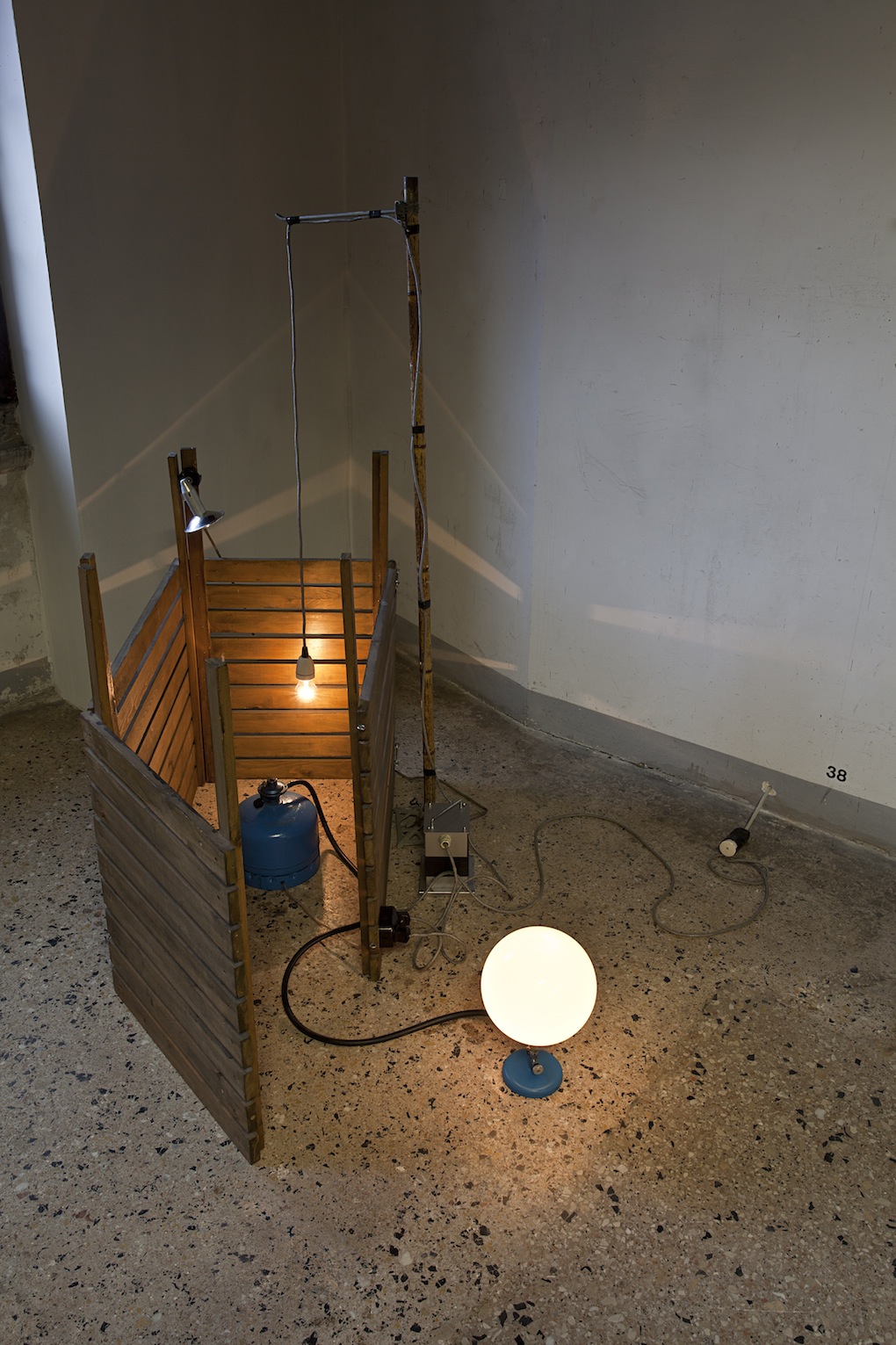30 October 2013
No city is more inclined than Eusapia to enjoy life and flee care. And to make the leap from life to death less abrupt, the inhabitants have constructed an identical copy of their city, underground. All corpses, dried in such a way that the skeleton remains sheathed in yellow skin, are carried down there, to continue their former activities. And, of these activities, it is their carefree moments that take first place: most of the corpses are seated around laden tables, or placed in dancing positions, or made to play little trumpets.
Italo Calvino, Invisible Cities (chapter 7: Cities and the dead, 3)
When Attitudes Become Form sounds like the opening of a poem from the Crepuscolari school. Every time I read this title—not the name of a literary work or an anthology of verse, but the title of an exhibition held in Bern in 1969—my imagination takes me back to the beginning of creation, to the telluric storms of an ancestral geological era: the time when life invaded the world and began to take shape.

Da sinistra a destra/From left to right: Stephen Kaltenbach, Graffiti Stamp, Lips of Artist, 1968; Joseph Kosuth I. Space (Art as Idea as Idea), “Tagwacht” March 8/9 1969, “Illustrierte” March 8/9 1969, “Der Bund” March 9 1969, “Berner Tagblatt” March 8/9 1969, 1969.
When Attitudes Become Form: Bern 1969/Venice 2013, Photo: Attilio Maranzano. Courtesy: Fondazione Prada.
And the exhibition curated by Harald Szeemann at the Kunsthalle Bern at the end of the sixties did in fact place the accent on the creative energy and exuberant vitality of an art that was hard to characterize, different from what had come before (pop art and minimalism), free of any limitation or constraint—first of all, that of the finished and motionless dimension of the object. Process, openness and metamorphosis were its distinctive traits, making this art a chaotic mix of approaches and situations, undergoing constant development and redefinition. The works were by European and American artists linked to the movements of conceptual art, land art and arte povera, the ones who were later to become the great masters of the contemporary: Carl Andre, Bruce Nauman, Joseph Beuys, Daniel Buren, Joseph Kosuth, Lawrence Weiner and Alighiero Boetti, to mention just a few.

Robert Barry, Uranyl Nitrate (UO-2 (NO-3)2), 1966; Daniel Buren, Affichages sauvages, 1969. When Attitudes Become Form: Bern 1969/Venice 2013, Photo: Attilio Maranzano. Courtesy: Fondazione Prada.
Today, 44 years later, the Fondazione Prada is staging the same exhibition again at Ca’ Corner della Regina, entrusting its curation to Germano Celant—Miuccia Prada’s right-hand man—with expert advice from Rem Koolhaas and Thomas Demand. When Attitudes Become Form: Bern 1969/Venice 2013 constitutes to all intents and purposes a literal remake of the show in Bern: the same works, the same artists, the same spaces. The 20th-century rooms of the Kunsthalle have been accurately reproduced inside the 18th-century ones of the Venetian palazzo: the walls, floors, windows and even the radiators have been duplicated on a 1:1 scale, leaving only the frescoed ceilings untouched. Some works that were shown in Bern but are absent from Venice because they have been lost or are no longer available are indicated by a photograph from the time and an outline traced on the wall or floor. One large section of the exhibition houses photographic documentation, films, notes and press cuttings related to the legendary exhibition of 1969.

Frank Lincoln Viner Never, Ending Surface, 1969. Pier Paolo Calzolari Scalea, (mi r fea pra) [Monumental Staircase (mi r fea pra)], 1968. When Attitudes Become Form: Bern 1969/Venice 2013, Photo: Attilio Maranzano. Courtesy: Fondazione Prada.
Celant defines the experiment as a readymade. The whole exhibition conceived for the Kunsthalle Bern and restaged in Venice can be seen as an object taken out of its context and put on show in another place and at another time. Just as happened with Duchamp and Man Ray’s readymades—it suffices to think of the upturned urinal (Fountain, 1917) or the iron studded with nails (Cadeau, 1921)—the restaging (or rather, the anachronistic sampling) of When Attitudes inside a noble palace facing onto the Grand Canal, after several decades, generates in the visitor a strong sensation of disorientation and bewilderment—the same feeling of estrangement that must have been created by the sight of a urinal in a museum.

Da sinistra a destra/From left to right: William T. Wiley, Slab’s Axe in Change, 1968 e/and Paul Cotton (Adam II), Table of Contents, 1966. When Attitudes Become Form: Bern 1969/Venice 2013, Photo: Attilio Maranzano. Courtesy: Fondazione Prada.
Walking through the rooms of Ca’ Corner, however, the question naturally arises: what is left of the vitality of those works that were shown in Bern over forty years ago? What happened to the energy, to the liberating power of an exhibition remembered for its avant-garde and subversive character? A hint of nostalgia pervades the rooms of the Venetian palazzo, lending a romantic air to its spaces, simultaneously so magnificent and shabby. And the ones that we admire inside them are like ruins—marvelous archeological exhibits of a recent but now vanished past.

Giovanni Anselmo, Torsione, 1968. When Attitudes Become Form: Bern 1969/Venice 2013, Photo: Attilio Maranzano. Courtesy: Fondazione Prada.

Neil Jenney, The Siegmund Biederman Piece, 1968. When Attitudes Become Form: Bern 1969/Venice 2013, Photo: Attilio Maranzano. Courtesy: Fondazione Prada.

Allen Ruppersberg, Untitled Travel Piece, Part 1, 1969. When Attitudes Become Form: Bern 1969/Venice 2013, Photo: Attilio Maranzano. Courtesy: Fondazione Prada.

Ger van Elk, Tres Qualitates Lucis, in Modo Rustico Californiae, 1968–69. When Attitudes Become Form: Bern 1969/Venice 2013, Photo: Attilio Maranzano. Courtesy: Fondazione Prada.
Follow Federico Florian on Google+, Facebook, Twitter.
Dello stesso autore / By the same author: ArtSlant Special Edition – Venice Biennale
Notes on ‘The Encyclopedic Palace’. A Venetian tour through the Biennale
The national pavilions. An artistic dérive from the material to the immaterial
The National Pavilions, Part II: Politics vs. Imagination
The Biennale collateral events: a few remarks around the stones of Venice